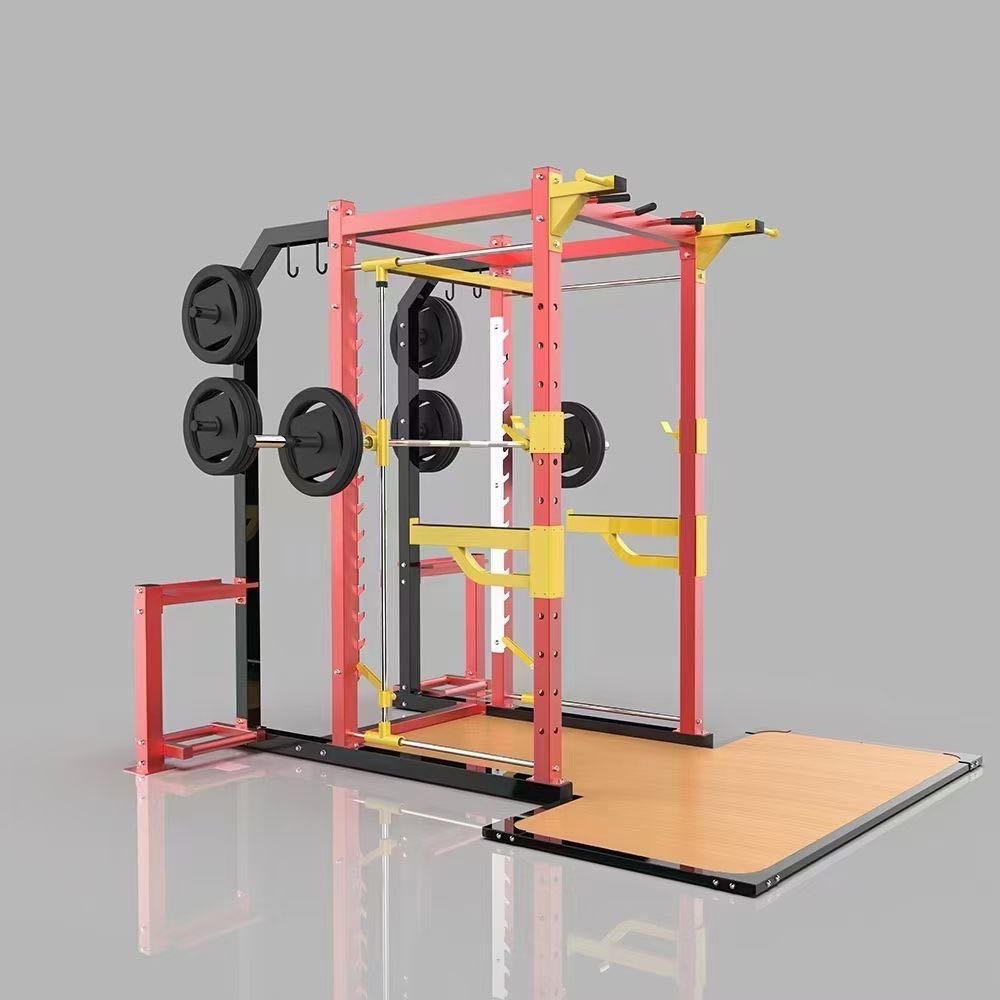
Every weightlifting enthusiast knows the importance of the right equipment for an effective and safe workout. However, one key component that often goes under the radar is the type of flooring used.
The floor beneath your feet or your weight bench can make a significant difference, from providing stability and noise reduction to protecting your equipment and flooring from the impact of dropped barbells.
The choices can seem limitless and daunting, from rubber mats and interlocking tiles to thick rubber flooring and stall mats. So, how do you decide on the best floor for weight lifting? Which material offers the optimal balance of protection, durability, and comfort? What thickness should your gym flooring be for weightlifting exercises? And how does the flooring impact other workouts you might want to incorporate into your routine, such as yoga or jump rope exercises?
This comprehensive guide aims to answer all these questions and more. Whether you’re setting up a commercial gym, establishing a weightlifting area in your garage, or simply looking to upgrade your existing home gym, our goal is to provide you with practical, research-backed advice. We’ll help you navigate the world of gym flooring options, weighing the pros and cons of each type and ultimately guiding you toward the best decision for your weightlifting needs. Let’s lift the veil on the world of weightlifting flooring and help you set the groundwork for successful workouts.
What Are Weight Mats and Why Do You Need Them?
Weight mats, gym mats, or exercise mats, are specially designed floor coverings that provide a cushioned surface for various fitness activities. They come in multiple materials, such as rubber, EVA foam, and more. Some are designed as interlocking tiles for easy installation and flexibility, while others come as a large single mat that can cover a sizable area.
So why are these mats so crucial for your workout space?
One of the primary reasons is protection. Whether you have wooden flooring, carpet, or even concrete in your home gym, repeated impacts from heavy weights can cause significant damage. A weight mat serves as a protective layer, absorbing the force of dropped weights and thus minimizing potential harm to your floor.
Secondly, weight mats provide a safer workout environment. When you’re lifting heavy weights, it’s essential to have a stable, slip-resistant surface underfoot. Weight mats provide this, enhancing your stability during lifts and reducing the risk of accidents.
Finally, weight mats offer noise reduction, an often overlooked but valuable feature, especially for home gym owners. Dropping weights can cause a considerable amount of noise, which can be disruptive to others in the household or your neighbors. A good weight mat absorbs the sound, making for a quieter workout.

Do I Need a Mat Under My Weight Bench?
If you’re using a weight bench in your workout routine, placing a mat underneath is highly recommended. There are a few critical reasons for this.
Firstly, a mat helps to stabilize the weight bench. While lifting, any instability or movement in the court can lead to accidents or incorrect lifting form, which can lead to injuries.
Secondly, even if you’re not dropping weights directly onto the floor, the weight bench can cause wear and tear on your flooring over time, especially when regularly moving it around. A mat protects the floor from such damage.
Lastly, as with weightlifting, a mat under your bench can help with noise reduction. This is particularly useful if you’re using free weights, which can cause a lot of noise when they come into contact with a hard surface.
So yes, while not absolutely necessary, a mat under your weight bench is a small investment that can provide significant benefits in the long run.

How Thick Should Weight Lifting Mats Be?
The thickness of a weight lifting mat can vary widely depending on the types of exercises you plan to do and the amount of weight you will be lifting. However, for general weight lifting, mats that are between 2cm to 2.5cm thick are most common. This thickness offers a good balance between comfort, protection, and durability.
The thickness of the mat plays a crucial role in a number of factors:
1. Protection: Thicker mats offer more protection for your floors as they can better absorb the impact of dropped weights.
2. Comfort: Thicker mats also provide more cushioning, which can make your workout more comfortable, particularly for exercises performed on the floor.
3. Noise Reduction: The thickness of the mat can help to reduce noise from dropping weights, with thicker mats generally offering better noise reduction.
Keep in mind that while thickness is essential, it’s not the only factor to consider. The material of the mat also plays a significant role in its performance. For example, mats made from rubber are generally more durable and offer better protection than those made from foam, even if they are of the same thickness.
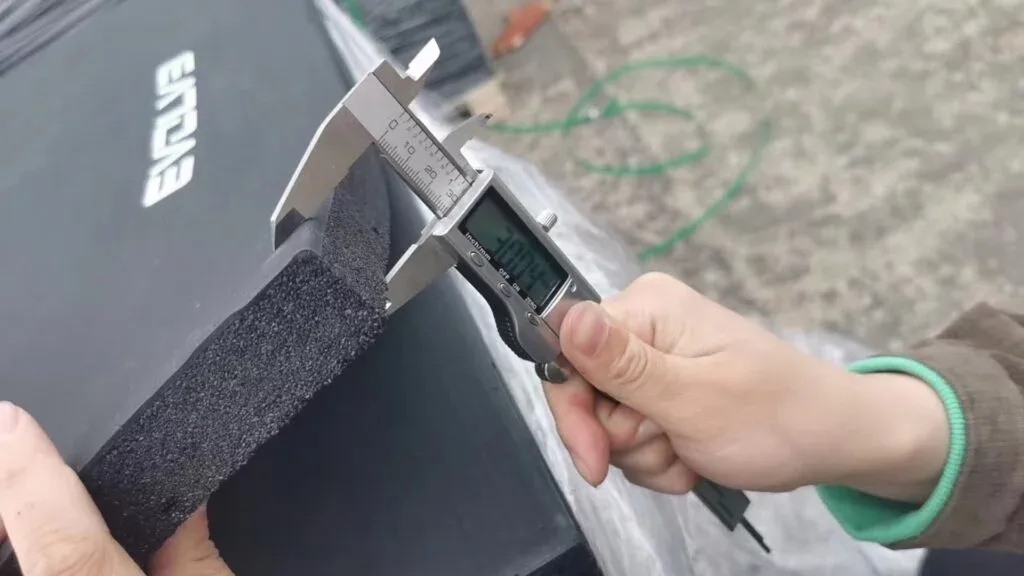
Are Thicker Mats Better for Heavy Weights?
When it comes to heavy weight lifting, thicker mats are typically the better choice. This is because they offer more absorption for the high impacts associated with heavy weights, providing better protection for your floors.
Heavyweight exercises, such as deadlifts and Olympic lifts, involve dropping weights from a height, which can cause significant damage to your floors if not adequately cushioned. A thicker mat can absorb more of this impact, minimizing potential harm.
Additionally, thicker mats are typically more durable and less likely to compress or degrade over time under the strain of heavy weights. This means that over time, they’ll offer more consistent protection.
However, it’s important to note that there is such a thing as too thick. Mats that are too thick can become unstable and may affect your balance during your workout. So, while it’s essential to choose a mat that’s thick enough to protect your floors and withstand the weights you’re using, ensure it doesn’t compromise your safety and performance.

What Flooring Should You Use to Drop Weights On?
When it comes to flooring suitable for dropping weights, your focus should be on durability, shock absorption, and safety. For these reasons, rubber is often the go-to material for weightlifting flooring. It’s tough enough to withstand heavy impacts, has excellent shock-absorbing properties, and provides a non-slip surface, even when wet.
Rubber gym flooring comes in various forms, including tiles, mats, and rolls. Interlocking rubber tiles is particularly popular as they are easy to install and can be replaced individually if one section becomes damaged.
Horse stall mats are another popular choice for weightlifting flooring. These thick rubber mats are designed to withstand the weight of a horse, making them incredibly durable and well-suited to handle the impact of dropped weights.
While these options work well in most cases, if you’re lifting hefty weights, you may want to consider a lifting platform. These platforms often combine multiple materials, such as a rubber outer section for dropping weights and a wooden center for lifting, providing the perfect combination of durability, performance, and protection.

What Is the Best Flooring for Olympic Lifting?
Olympic lifting involves complex, dynamic movements often executed with heavy weights. This places significant demand on your flooring. Not only does it need to withstand high-impact drops, but it also needs to provide a stable and consistent surface for optimal performance.
For Olympic lifting, many athletes prefer to use a lifting platform, which is a specially designed surface that combines multiple materials. Typically, lifting platforms have a wooden center for the lifter to stand on, providing a smooth, stable surface that’s perfect for the precise foot movements involved in Olympic lifts. The platform’s outer sections are usually made of rubber, providing a safe area to drop weights.
If a lifting platform isn’t feasible, thick rubber flooring, such as rubber tiles or horse stall mats, can be a good alternative. These options offer the durability and shock absorption needed for Olympic lifting. However, they might not provide the same level of stability as a dedicated lifting platform.
Regardless of the type of flooring you choose, ensure that it’s correctly installed and lies flat, as uneven surfaces can lead to instability and increase the risk of accidents.
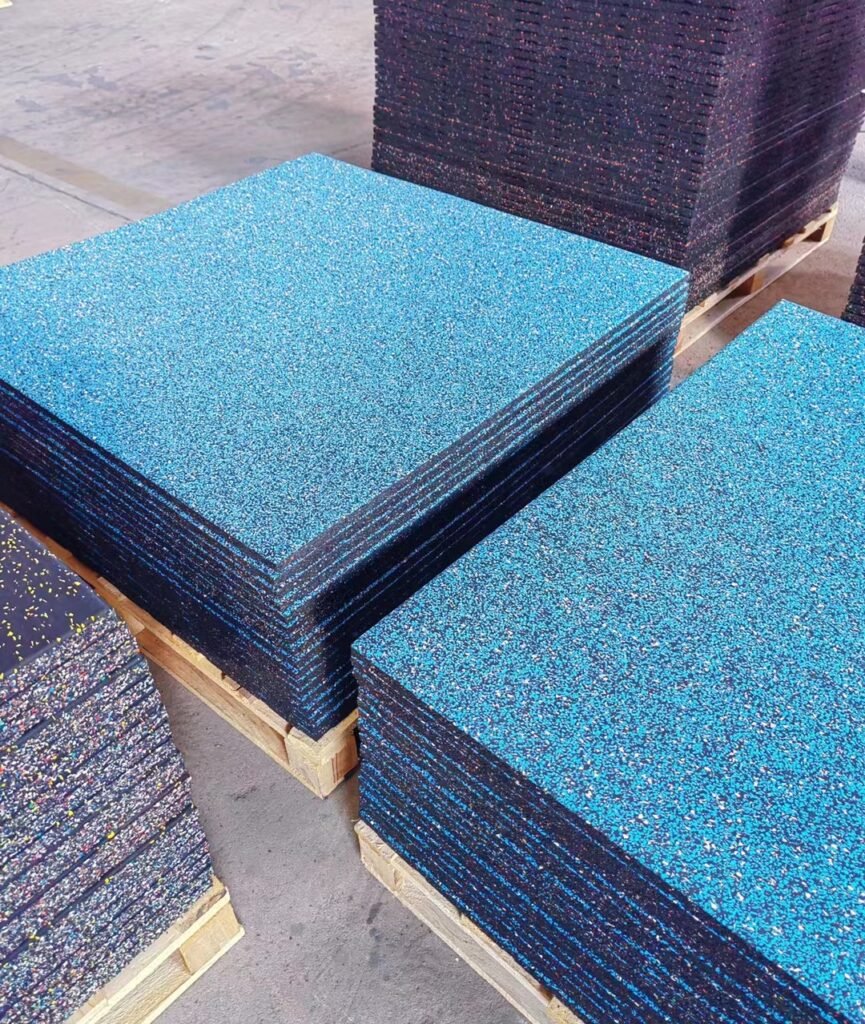
How Can I Safeguard My Workout Room Floor from Weights?
Preserving your gym floor from potential harm caused by weights is pivotal for the lifespan of your home or commercial gyms. Here are some valuable tips:
1. Leverage Weightlifting Matting:** Weightlifting mats form a defensive layer between your weights and the floor, particularly important when you have to protect the flooring underneath. Choose mats made from resilient, high-quality materials such as recycled rubber.
2. Consider a Weightlifting Platform:If your weight training includes heavy-duty lifting, a weightlifting platform can offer an advanced level of protection. These are usually assembled with a combination of rubber and wood and are built to withstand the shock of dropped weights.
3. Opt for Rubberized or Coated Gym Equipment:Such weights are more floor-friendly, minimizing the impact and potential damage when they hit the gym floor.
4. Avoid Dropping Weights: Whenever possible, try to avoid dropping weights as it can significantly lessen the risk of damaging your floors. However, this may not always be possible, especially for exercises like Olympic lifting.
5. Regular Maintenance: Regularly check your rubber gym mats for signs of wear and tear. Spotting potential issues early can prevent further damage.
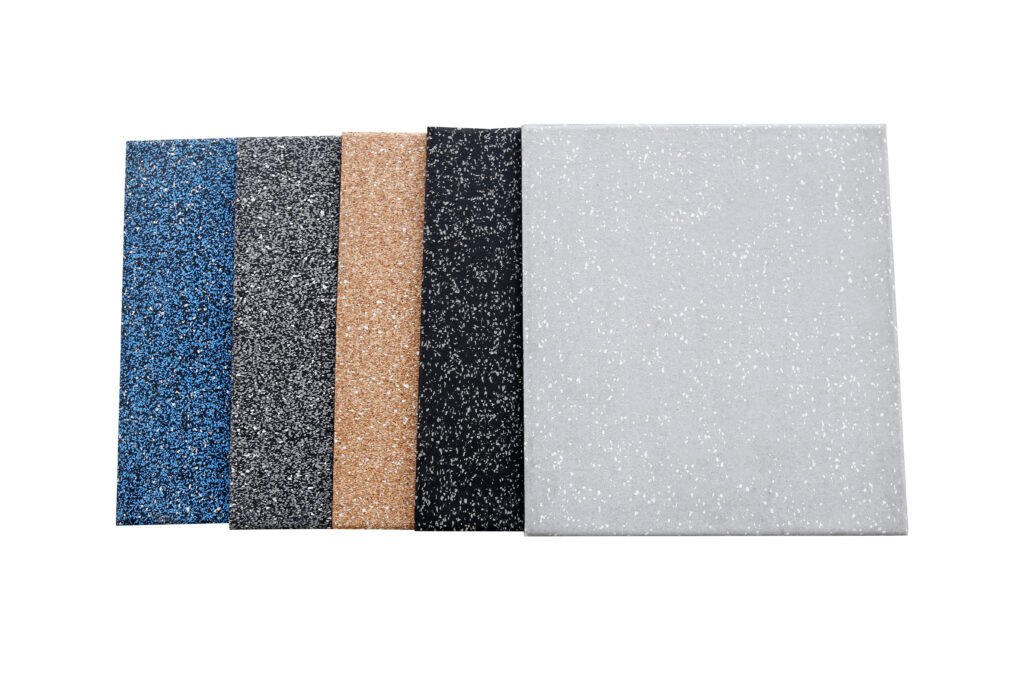
What Should Be the Thickness of My Home Gym Flooring for Weights?
The thickness of your home gym flooring hinges mainly on the type of weightlifting exercises you perform. Here’s a general guideline:
– For lighter weights and bodyweight exercises, including yoga or jumping rope, a yoga mat or foam mat around 1.5cm to 2cm thick should suffice. These thickness options are sufficient for basic floor exercises.
– For medium to heavy weights, rubber weight room flooring or rubber mats that are between 2cm to 2.5cm thick are your best bet. This thickness offers better shock absorption and durability, essential for any weight room.
– For hefty weights or high-intensity exercises, you may need even thicker flooring or a dedicated lifting platform. These typically combine multiple materials, such as rubber rolls and wood, and are built to absorb high impacts.
Regardless of the type of exercise mat or floor mat you choose, remember that the quality of the material and its shock absorption capabilities are equally crucial in safeguarding your gym floor from weights. Whether your gym is in the garage, spare bedrooms, or a designated workout room, choosing the right flooring – be it rubber floor, foam tiles, or rubber weight room flooring, has many benefits.

What Kind of Flooring Is Optimal for the Gym?
Choosing the perfect gym flooring is vital as it contributes significantly to the safety and effectiveness of your workouts. The most appropriate flooring for your gym hinges on your exercise routine and gym equipment used.
Rubber Gym Mats: These mats, especially those made from durable rubber, offer robustness, shock absorption, and anti-slip properties, making them a top choice for rigorous workouts or heavy lifting. Available in tiles or rolls, these rubber mats are a breeze to install and maintain.
Foam Mats: Representing an affordable and versatile solution, foam mats are user-friendly to install and deliver decent padding for floor exercises or yoga. However, they might not stand the test of time with heavy equipment or intense weightlifting, as they tend to compress over time.
Interlocking Tiles: Crafted from materials like rubber, these tiles are a cinch to install and replace if one gets damaged. They work like a charm for multi-purpose home gyms.
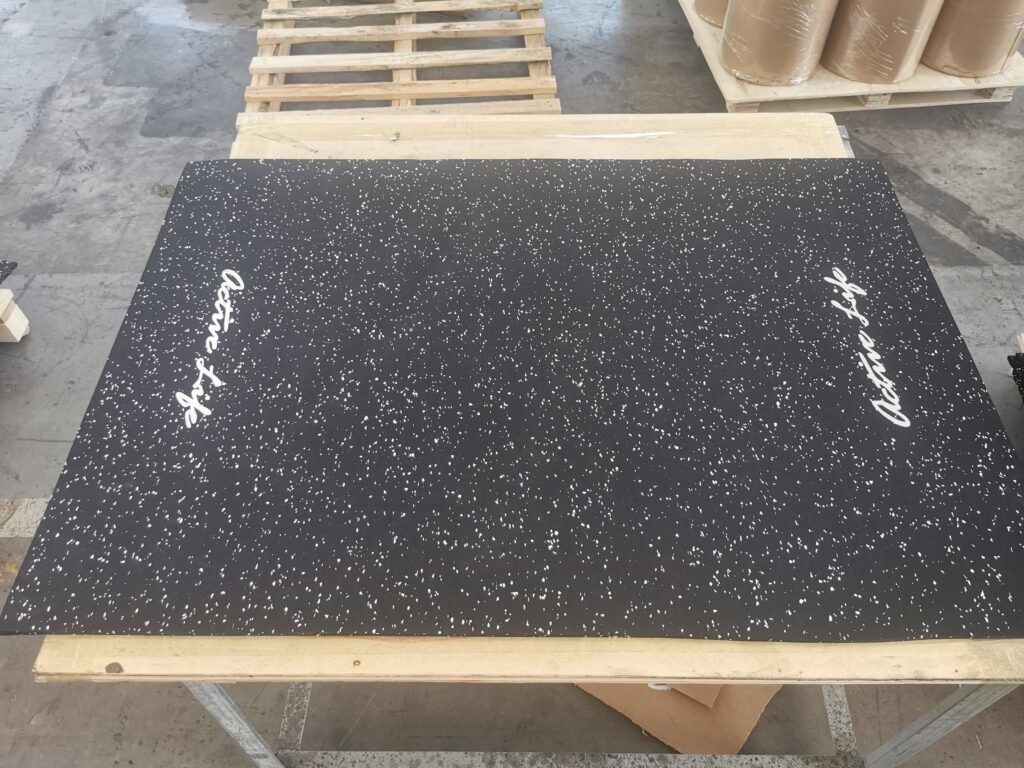
Why Should Opt for Rubber Gym Flooring?
Rubber gym flooring has several advantages that make it a popular pick for both home gyms and commercial fitness centres. Known for its robustness, it can endure heavy gym equipment and high-impact exercises. It boasts excellent shock absorption capabilities, providing extra protection to your equipment and joints during workouts. In addition, rubber flooring is slip-resistant, enhancing safety when floors become wet or sweaty.
Moreover, rubber flooring is a breeze to clean and maintain, which is incredibly beneficial in high-traffic gym environments. It’s also available in various thicknesses and formats (tiles, rolls, mats), allowing for customization based on your gym’s requirements.
Are Rubber Gym Mats Safe to Use?
Yes, rubber gym mats are generally safe and are often suggested for gym settings. They furnish a non-slip surface, minimising the risk of workout-related accidents. Furthermore, they’re sturdy and can bear the heavy impact of weights and gym equipment, reducing the chance of damage to the underlying floor.
However, keep in mind that not all rubber mats are the same. It’s crucial to opt for high-quality rubber mats that are free from harmful chemicals. Some rubber mats might initially emit a strong odor, but this usually fades over time.
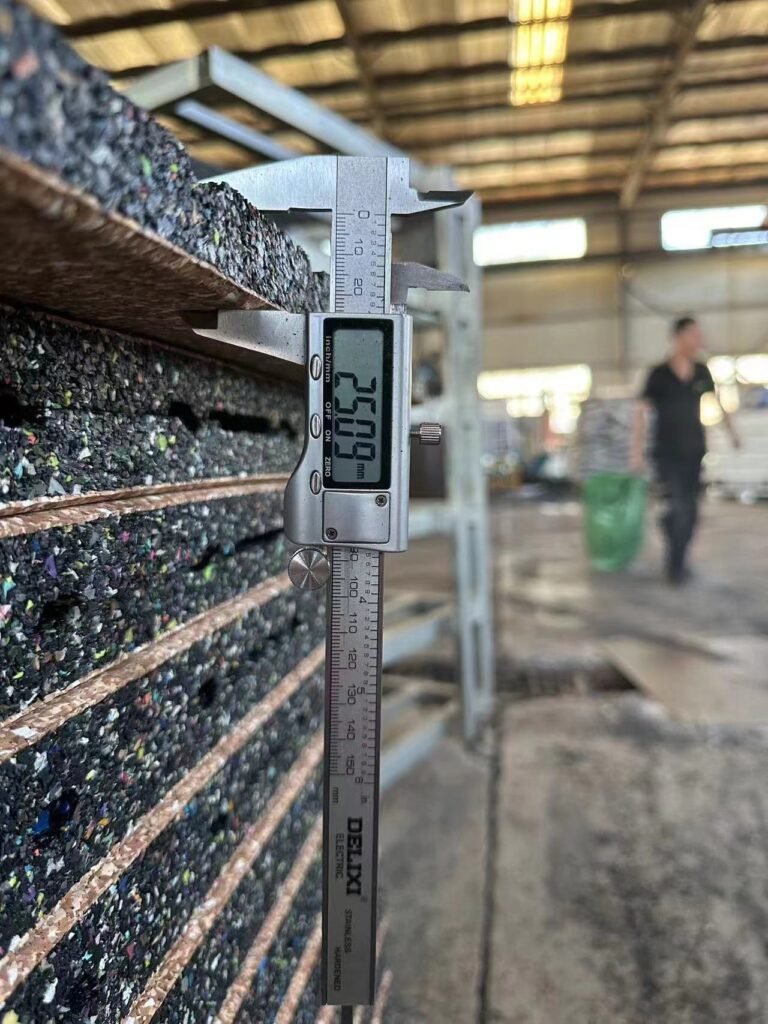
What Kind of Mat Should I Use at the Gym?
Choosing the right mat for your gym can significantly enhance your exercise experience, and it primarily depends on the types of workouts you perform. There’s a wide variety of gym mats available, each with its unique benefits.
Rubber Mats: These are a staple in many fitness facilities. Rubber mats provide a durable, slip-resistant surface that’s perfect for heavy-duty exercises like weight lifting. They’re excellent at absorbing impact, reducing the strain on your joints and the noise level in the gym.
Foam Mats: If you’re more into yoga, Pilates, or other types of low-impact floor exercises, foam mats could be an excellent choice. They offer superior comfort and cushioning, making your workout more comfortable. However, they might not be the best option for heavy equipment as they can compress over time.
Exercise Mats: These mats are generally thinner and softer, designed for comfort during floor exercises. They are typically made from foam or PVC and are often used for yoga or stretching exercises.
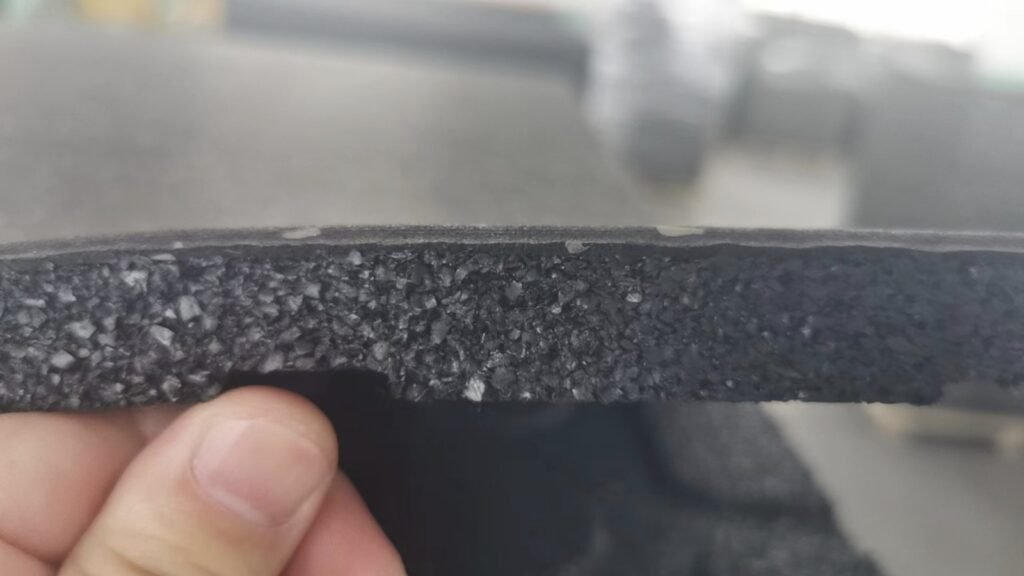
Are Rubber Mats Good for Gym?
Yes, rubber mats are an excellent choice for gym flooring. They are durable, providing a solid surface that can handle heavy gym equipment and weights. Rubber mats also offer superior grip, reducing the risk of slipping during a workout.
Their shock-absorption properties not only protect your gym floor from damage but also minimize noise and vibrations, making them a popular choice in residential and commercial gyms alike.
However, while rubber mats are a fantastic option, they might not be the best choice for everyone. For instance, some rubber mats can emit an initial odor that may be off-putting to some, although this typically dissipates over time. Additionally, while rubber is easy to clean, it can stain, so it’s essential to promptly clean up any spills.
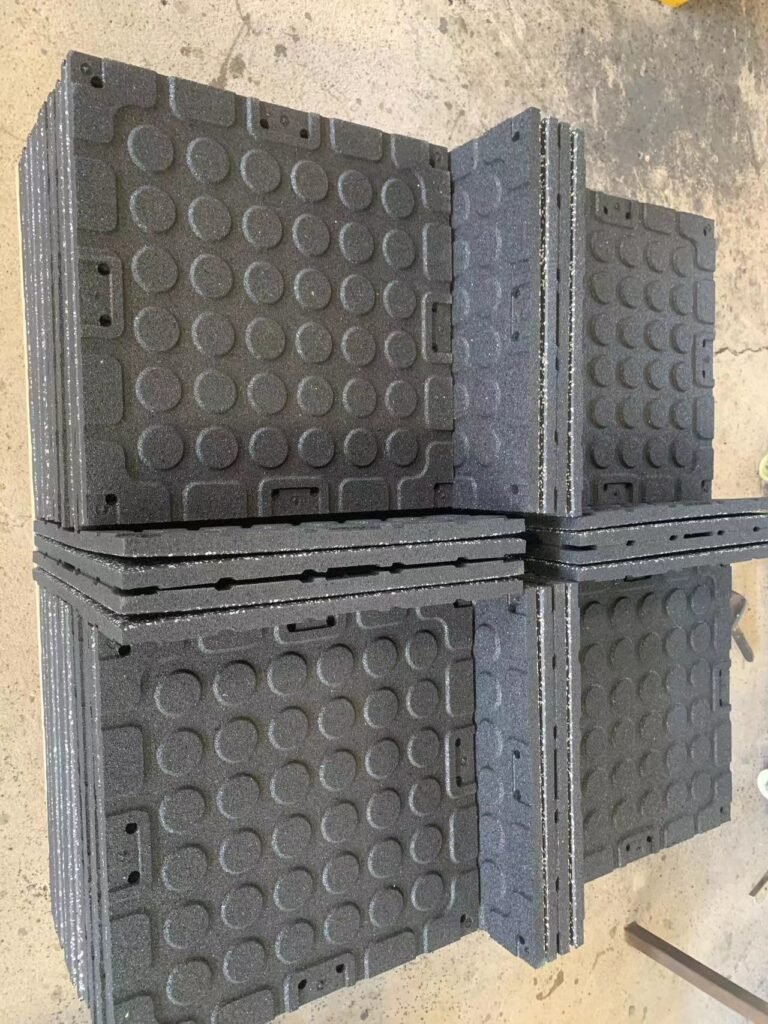
depends on the nature of your workouts and personal preferences. While rubber mats are renowned for their durability and excellent shock-absorption, foam mats provide superior comfort for low-impact exercises. It’s essential to consider factors such as thickness, safety, and material when choosing your gym flooring. Ultimately, a well-chosen gym mat can enhance your workout experience, protect your flooring, and promote longevity of your fitness equipment.


